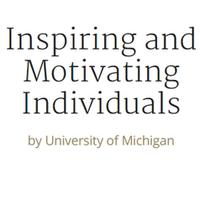1.15 (V) 01.11 - Part 2 - Visionary Language - Reflecting on Dead Poets Society
So what'd you see? You've seen the video, you've seen Robin Williams interact with this class of boys in this poetry class. What'd you see? Use the checklist. For example, did he refer to fundamental values? Do you recall, for example, him referring to what it means to be a member of the human race? And the relevance or the importance of poetry. To that fundamental value of being human. Did he repeat? He repeated his message multiple times. Did he ask rhetorical questions? For example, how he ends the conversation he's having with the boys when he says, what will your verse be? And then he actually repeats that. What will your verse be? This is a classic and a wonderful example of someone who's taking a group that is not exactly on his side, that is just there, not engaged, maybe even actively disengaged. And using a vision and a compelling vision that uses the language that we've articulated being necessary in this checklist to compel these boys to at least be interested to want to hear what he wants to say, which then gives him the opening to create the class that he wants. The same is true for your teams. You can use this checklist to craft how you're gonna communicate to your team to create that opening to engage them where they want to be part of this vision that you are trying to get them on board with. Now you're not going to go and necessarily huddle. Why does he huddle up and have the boys surround him? Well, what do teenage boys do? They play sports in many cases. And a huddle is exactly that. We're part of a team. Why does, for example, Robin Williams get himself lower than those boys? Well, those boys have always been in the environment where the teacher is the powerful one, and they are the student. He is shifting that mindset, where he is one of them. That's the inclusivity that is behind the use of inclusive language. Using language like we and our as opposed to me, the teacher, or me, the leader. You can see when the Head Master of the school walks in and questions what they're doing. There's that separation between power, between the Head Master and the students. Robin Williams comes back into the room and acts as if nothing is wrong. Again, we, our, and we are up against the establishment. That sense of community and collective nature of the team is ultimately what he's after. The same is true for you. How do you use language that brings people into your vision, as opposed to creating separation? This checklist will help you to do exactly that, and ultimately help you create a vision that people want to support, they're compelled to get behind. And then you're using that vision to enable their actions to create the success that you have in mind.

